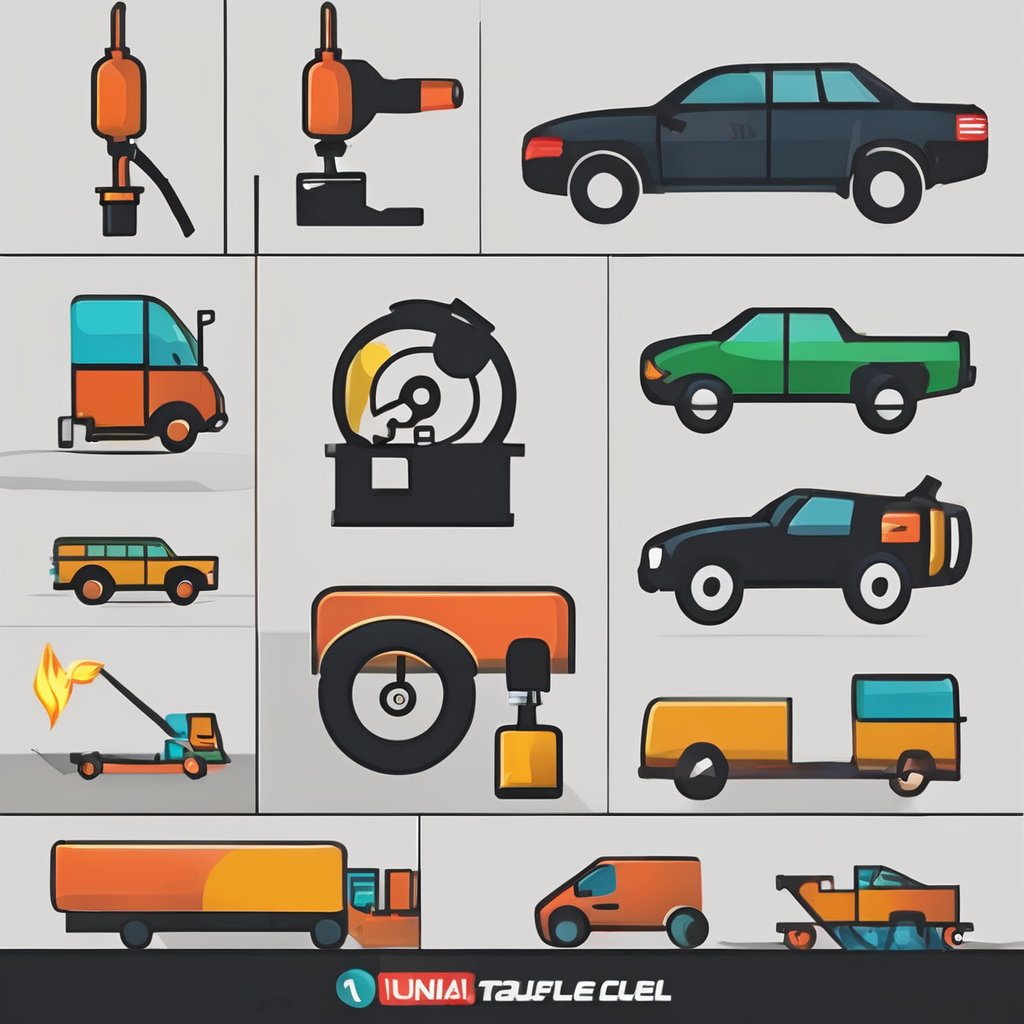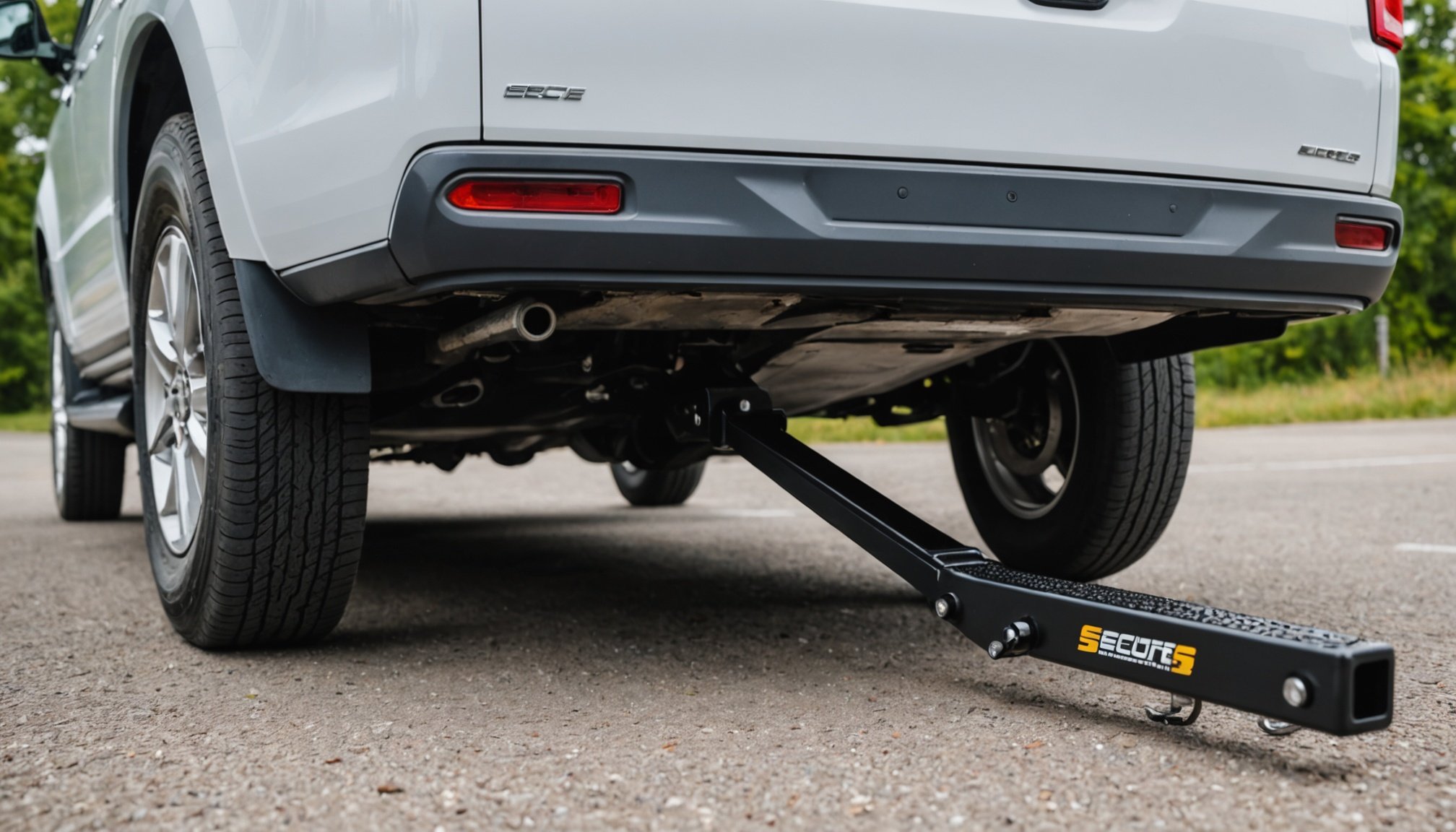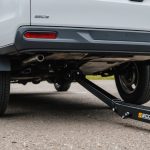The Ultimate Guide to Securely Installing and Maintaining Your Vehicle’s Trailer Hitch: Top Tips for Safety
Understanding Your Vehicle’s Towing Capacity
Before you even think about installing a trailer hitch, it’s crucial to understand your vehicle’s towing capacity. This is not just about the size of your vehicle, but also about its specific capabilities and limitations.
Check Your Vehicle’s Manual
To determine your vehicle’s towing capacity, you need to consult your vehicle’s manual. The gross vehicle weight rating (GVWR) and the gross trailer weight rating (GTW) are key figures to look for. These ratings are often found on the inside of the driver’s side door or in the manual itself[5].
Have you seen this : Ultimate guide to protecting your vehicle”s rollover safety features
Towing Capacity Classes
Trailer hitches come in different classes, each designed for specific towing capacities. Here’s a brief overview:
| Hitch Class | Weight Capacity | Typical Use |
|---|---|---|
| Class I | Up to 2,000 lbs | Small trailers, bikes |
| Class II | Up to 3,500 lbs | Medium trailers, boats |
| Class III | Up to 6,000 lbs | Larger trailers, campers |
| Class IV | Up to 10,000 lbs | Heavy-duty trailers, large campers |
| Class V | Up to 17,000 lbs | Very heavy trailers, fifth-wheel or gooseneck hitches[2][5] |
Matching Your Hitch to Your Vehicle
Ensure that the hitch you choose matches or exceeds your vehicle’s towing capacity and is compatible with your trailer’s coupler. A hitch that is not rated for your vehicle’s towing load can easily fail under stress, leading to dangerous conditions on the road[4].
Additional reading : Crucial safety protocols for optimizing alignment of high-performance brake systems
Selecting the Right Hitch
Choosing the right hitch is a critical step in ensuring safe towing. Here are some key considerations:
Types of Hitches
- Weight-Carrying Hitch: Supports the trailer tongue weight directly. Common for small and medium-sized trailers[2].
- Weight-Distributing Hitch: Includes a system that distributes the weight of the trailer across the tow vehicle and the trailer, allowing for heavier loads[2].
- Fifth-Wheel Hitch: Mounts over the rear axle of the tow vehicle and is used for large travel trailers and heavy loads[2].
Consider Your Trailer’s Needs
- Tongue Weight: The ideal tongue weight should be about 13% of the gross trailer weight (GTW). For example, a trailer with a GTW of 4,000 lbs should have a tongue weight of around 520 lbs[2].
Preparing for Installation
Installing a trailer hitch is not a task to be taken lightly. Here are some steps to prepare:
Gather Tools and Materials
Make sure you have all the necessary tools and materials before starting the installation. This includes the hitch itself, bolts, rubber plugs, and any other components specified in the instructions[1].
Prioritize Safety
- Chock Your Wheels: Ensure your vehicle is securely positioned to prevent any movement during the installation.
- Use Jack Stands: For added safety, use jack stands to support your vehicle.
- Clear the Area: Keep children and animals away from the work area[1].
Remove Obstructions
If your vehicle has a spare tire located under the vehicle, you may need to remove it to access the area where the hitch will be installed. Set it aside and reattach it after the installation is complete[1].
Installing the Hitch
The installation process requires careful attention to detail to ensure safety and proper function.
Follow the Instructions
Read the instructions carefully and follow them step-by-step. Each hitch has unique features, so it’s important to be familiar with these to avoid any issues during or after installation[1].
Place and Fasten the Hitch
- Position the Hitch: Move the receiver hitch into position. Some hitches can be heavy, so consider asking for help to avoid accidents.
- Tighten the Nuts and Bolts: Hand-tighten all the nuts and bolts, then torque them according to the specifications provided in the instructions[1].
Reassemble Everything
After the hitch is securely in place, reverse the preparation process by returning any bolts or plugs you removed and reattaching your spare tire if necessary[1].
Safety Measures During Towing
Once your hitch is installed, there are several safety measures to keep in mind when towing.
Proper Weight Distribution
Ensure that your trailer is loaded correctly to maintain proper weight distribution. An improperly loaded trailer can lead to instability on the road.
Use Safety Chains
Always use safety chains when towing. These chains should be crossed under the trailer and attached to the tow vehicle to prevent the trailer from detaching in case the hitch fails[2].
Check Your Connections
Before hitting the road, make sure all connections are secure. This includes the hitch, ball mount, and any electrical connections for lights and brakes.
Regular Maintenance
Regular maintenance is crucial for safe towing. Here are some key checks to perform:
- Hitch and Ball Mount: Ensure the hitch and ball mount are in good condition and properly secured.
- Safety Chains: Check for any wear or damage on the safety chains.
- Tire Pressure: Maintain proper tire pressure for both your vehicle and the trailer.
- Lights and Brakes: Ensure all lights and brakes on the trailer are functioning correctly[4].
Tips for Safe Towing
Safe towing is not just about the installation; it’s also about how you tow.
Drive Smoothly
Avoid sudden stops and sharp turns. Smooth driving helps maintain stability and reduces the risk of trailer sway.
Monitor Your Trailer
Keep an eye on your trailer while driving. If you notice any signs of instability or issues, pull over to a safe location to check and adjust as necessary.
Use Weight Distribution Systems
For heavier trailers, consider using a weight distribution system to ensure the weight is evenly distributed between the tow vehicle and the trailer[2].
When to Seek Professional Help
While many vehicle owners opt to install hitches themselves, there are times when seeking professional help is the best option.
Complexity of Installation
If the installation process seems too complex or you lack the necessary tools and experience, it’s better to hire a professional. Improper installation can lead to serious safety issues[4].
Ensuring Compatibility
A professional installer can ensure that the hitch is compatible with your vehicle and trailer, and that it is installed correctly to handle your towing capacity.
Installing and maintaining a trailer hitch is a serious undertaking that requires careful attention to detail and a commitment to safety. Here are some final tips to keep in mind:
- Always Follow Instructions: Read and follow the instructions provided with your hitch carefully.
- Prioritize Safety: Take all necessary safety precautions during installation and while towing.
- Regular Maintenance: Regularly check and maintain your hitch, trailer, and vehicle to ensure safe towing.
- Seek Professional Help When Needed: If you’re unsure about any aspect of the installation or maintenance, don’t hesitate to seek help from a professional.
By following these guidelines, you can ensure that your towing experience is safe, efficient, and enjoyable.
Detailed Checklist for Safe Towing
Here is a detailed checklist to ensure you are ready for safe towing:
-
Check Your Vehicle’s Towing Capacity:
-
Consult your vehicle’s manual.
-
Ensure the hitch matches or exceeds your vehicle’s towing capacity.
-
Select the Right Hitch:
-
Choose a hitch that is compatible with your trailer’s coupler.
-
Consider the type of hitch needed (weight-carrying, weight-distributing, fifth-wheel).
-
Prepare for Installation:
-
Gather all necessary tools and materials.
-
Chock your wheels and use jack stands.
-
Clear the area of obstructions.
-
Install the Hitch:
-
Follow the instructions carefully.
-
Ensure the hitch is securely fastened.
-
Reassemble everything after installation.
-
Safety Measures During Towing:
-
Ensure proper weight distribution.
-
Use safety chains.
-
Check all connections before driving.
-
Regular Maintenance:
-
Check the hitch and ball mount.
-
Inspect safety chains.
-
Maintain proper tire pressure.
-
Ensure all lights and brakes are functioning correctly.
By adhering to this checklist, you can significantly reduce the risks associated with towing and ensure a safe and enjoyable experience on the road.
Table: Comparison of Common Hitch Types
| Hitch Type | Weight Capacity | Typical Use | Key Features |
|---|---|---|---|
| Weight-Carrying Hitch | Up to 6,000 lbs | Small to medium trailers, boats | Supports trailer tongue weight directly |
| Weight-Distributing Hitch | Up to 12,000 lbs | Larger trailers, campers | Distributes weight across tow vehicle and trailer |
| Fifth-Wheel Hitch | Up to 17,000 lbs | Large travel trailers, heavy loads | Mounts over rear axle, connects with king pin |
| Gooseneck Hitch | Up to 30,000 lbs | Very heavy trailers, commercial use | Mounts in truck bed, connects with ball and coupler |
Quotes from Experts
- “Improperly installing your hitch can lead to spurious injury and even death. So this isn’t the time to throw away the directions. Read them, and read them carefully.” – GEN-Y HITCH[1]
- “A hitch that’s not rated for your vehicle’s towing load can easily fail under stress. This may lead to trailer detachment, vehicle instability, and dangerous conditions for both you and others on the road.” – Uniglass Plus[4]
- “Regular maintenance is crucial for safe towing. Ensure all connections are secure, and check for any wear or damage on the safety chains and other components.” – Engineers Edge[2]
By following these guidelines, tips, and expert advice, you can ensure that your trailer hitch installation and maintenance are done safely and effectively, providing you with a worry-free towing experience.











